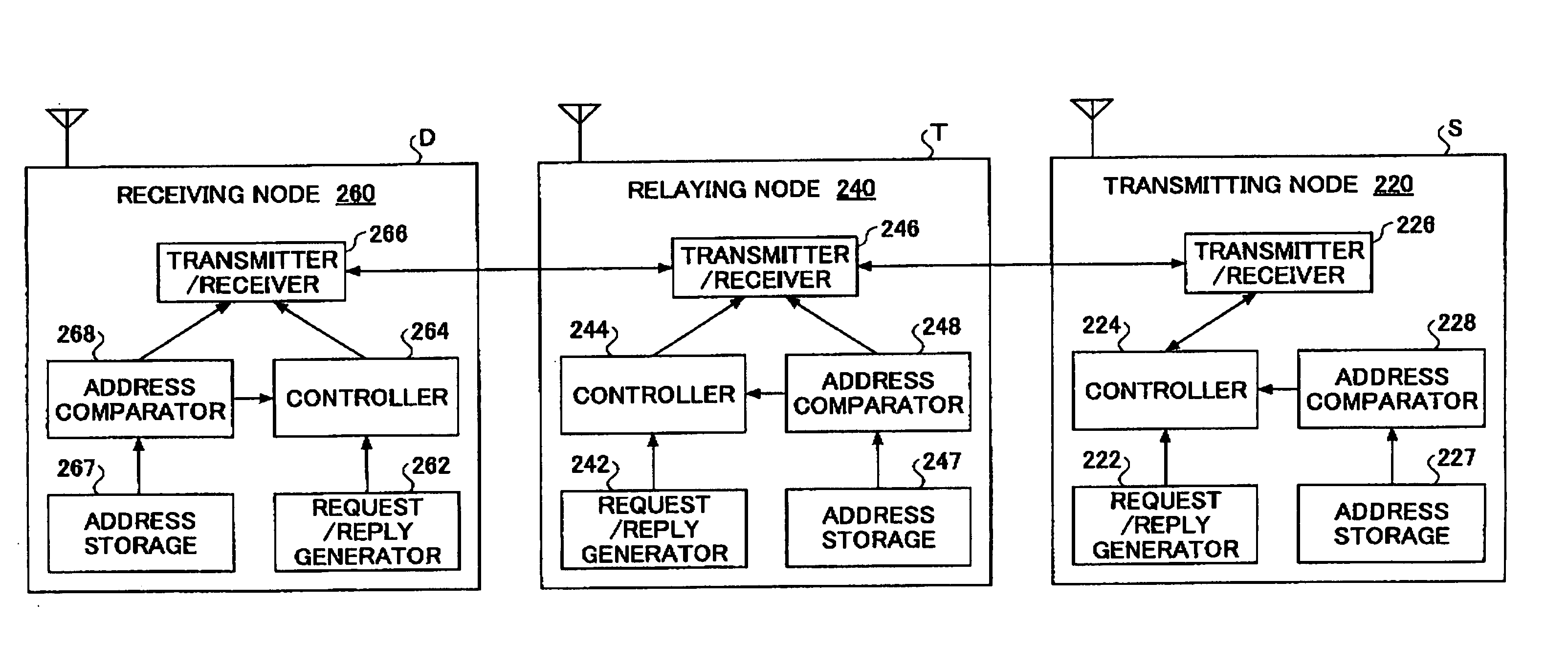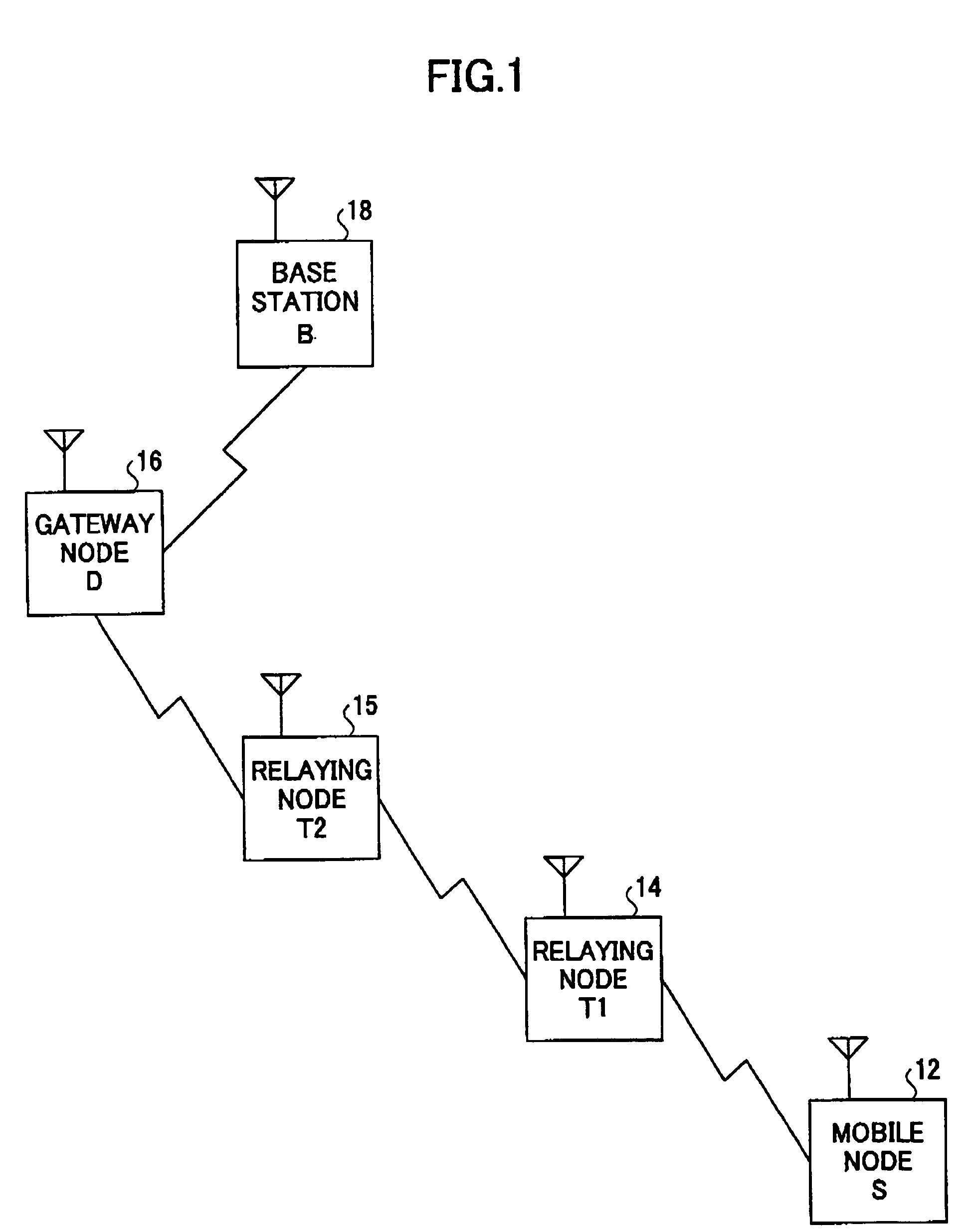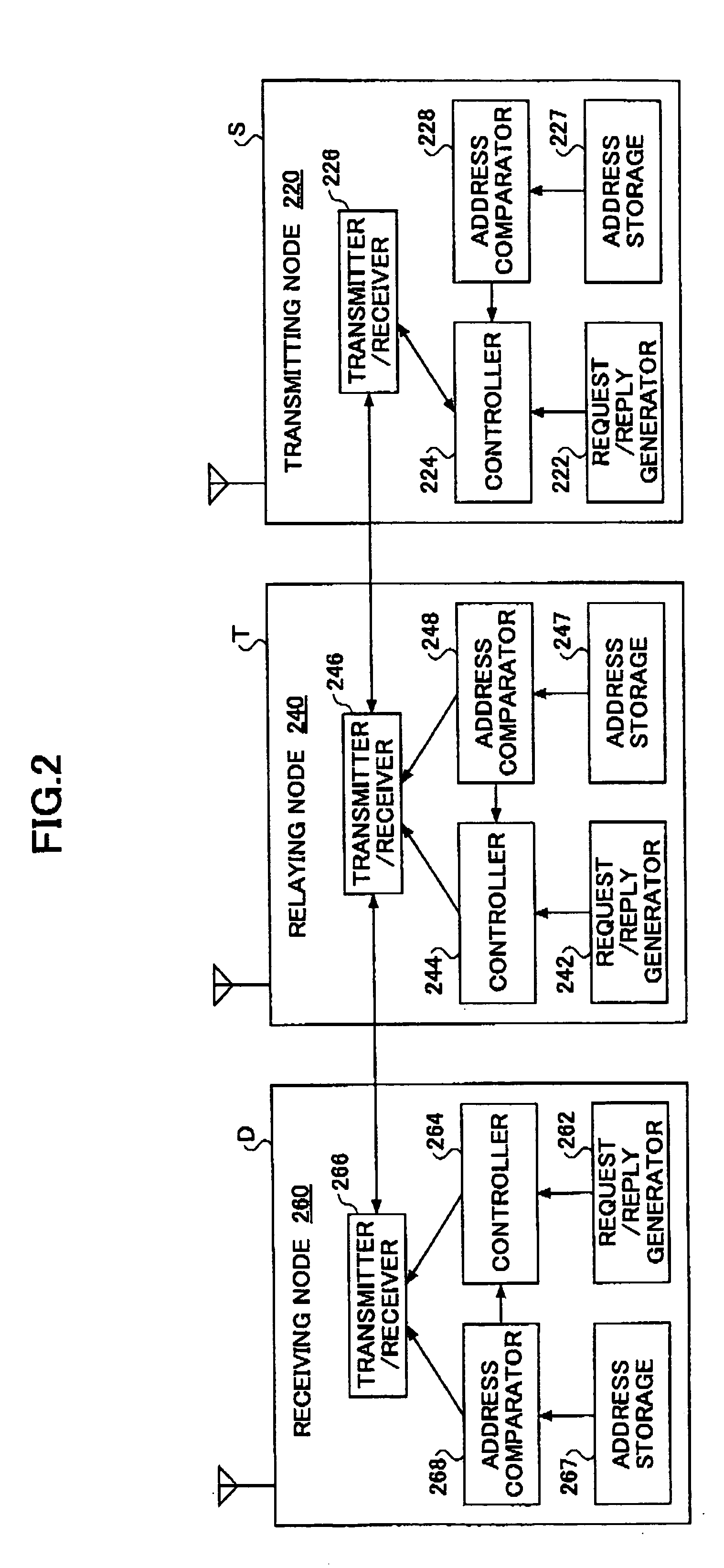Mobile node, an ad hoc network routing controlling method and an ad hoc network system
- Summary
- Abstract
- Description
- Claims
- Application Information
AI Technical Summary
Benefits of technology
Problems solved by technology
Method used
Image
Examples
first embodiment
[0045] With reference to FIGS. 4 and 5, a first embodiment of the present invention is explained below. A mobile node (terminal) 400 according to the first embodiment of the present invention comprises a request / reply generator 422, a controller 424, a transmitter / receiver 426, an address storage 427, an address comparator 428, a random number generator 430, a certificate issuing unit 440, a digital signature creator 450, a secret key processor 460, an operating unit 470 and a verifying unit 480. This structure is not limited to a transmitting node. Not only a transmitting node but also a relaying node or receiving node may have a similar structure. The present invention can be applied to not only radio mobile communications but also to wire communications.
[0046] A route request control message RREQ generated by the request / reply generator 422 is broadcast-transmitted by the transmitter / receiver 426 to a network.
[0047] In the first embodiment, as shown in FIG. 5, an authentication...
second embodiment
[0057] With reference to FIGS. 6 through 10, a second embodiment of the present invention is explained below, FIG. 6 is the same as FIG. 5 except that the information about nodes S and D is shown shaded. As shown in FIG. 6, the first embodiment cannot protect privacy. For example, in an area where users are limited, there is a risk that the CertS and therefore the transmitting node S are exposed by trying all certificates.
[0058] In this embodiment, the shaded fields in FIG. 6 are encrypted and hided so as to be known only by nodes S and D in order to improve privacy protection.
[0059] The common key encryption system is known as a basic encryption system. In the common key encryption system, a transmitting node S encrypts plain data using a common secret key and transmits the cipher data, and a receiving node D receives the cipher data and decrypts them using the same common secret key. Since the procedures for encrypting and decrypting use the equivalent but opposite directed proc...
third embodiment
[0080] With reference to FIGS. 11 and 12, a third embodiment of the present invention is explained below.
[0081]FIG. 11 is the same as FIG. 10 except that portions of the relaying node information exposable to third parties are shown shaded. Considering the necessity of relaying node information, although the transmitting node S and the receiving node D need to know all the relaying node information, the relaying nodes themselves only have to determine the following matters.
[0082] 1) As for the RREQ signal, confirmation whether the signal is directed to itself, authenticity of information from the preceding node.
[0083] 2) As for RREP signal, whether itself is included in a forwarding address list.
[0084] Accordingly, since unnecessary information exposure may be a target for attacking, it is desired to hide the relaying node information as much as possible from any other than the transmitting node S and the receiving node D. An example is explained below, in which the shaded porti...
PUM
 Login to View More
Login to View More Abstract
Description
Claims
Application Information
 Login to View More
Login to View More - R&D
- Intellectual Property
- Life Sciences
- Materials
- Tech Scout
- Unparalleled Data Quality
- Higher Quality Content
- 60% Fewer Hallucinations
Browse by: Latest US Patents, China's latest patents, Technical Efficacy Thesaurus, Application Domain, Technology Topic, Popular Technical Reports.
© 2025 PatSnap. All rights reserved.Legal|Privacy policy|Modern Slavery Act Transparency Statement|Sitemap|About US| Contact US: help@patsnap.com



